
The Inuit languages are a closely related group of indigenous American languages traditionally spoken across the North American Arctic and the adjacent subarctic regions as far south as Labrador. The Inuit languages are one of the two branches of the Eskimoan language family, the other being the Yupik languages, which are spoken in Alaska and the Russian Far East. Most Inuit people live in one of three countries: Greenland, a self-governing territory within the Kingdom of Denmark; Canada, specifically in Nunavut, the Inuvialuit Settlement Region of the Northwest Territories, the Nunavik region of Quebec, and the Nunatsiavut and NunatuKavut regions of Labrador; and the United States, specifically in northern and western Alaska.
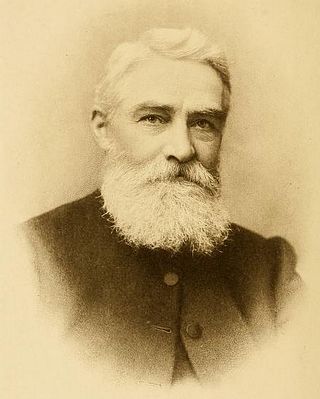
Edmund James Peck, known in Inuktitut as Uqammaq, was an Anglican missionary in the Canadian North on the Quebec coast of Hudson Bay and on Baffin Island. He founded the first permanent mission on Baffin Island, Nunavut. He developed Inuktitut syllabics, derived from the Cree syllabary and the first substantial English-Inuktitut dictionary.
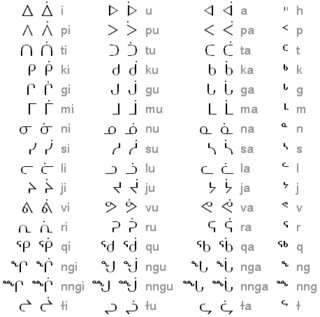
Inuktitut syllabics is an abugida-type writing system used in Canada by the Inuktitut-speaking Inuit of the territory of Nunavut and the Nunavik and Nunatsiavut regions of Quebec and Labrador, respectively. In 1976, the Language Commission of the Inuit Cultural Institute made it the co-official script for the Inuit languages, along with the Latin script.
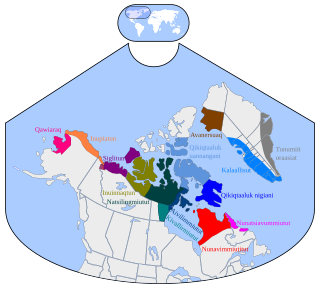
Inuktitut, also known as Eastern Canadian Inuktitut, is one of the principal Inuit languages of Canada. It is spoken in all areas north of the North American tree line, including parts of the provinces of Newfoundland and Labrador, Quebec, to some extent in northeastern Manitoba as well as the Northwest Territories and Nunavut. It is one of the aboriginal languages written with Canadian Aboriginal syllabics.

Parts of the Bible have been translated into Welsh since at least the 15th century, but the most widely used translation of the Bible into Welsh for several centuries was the 1588 translation by William Morgan, Y Beibl cyssegr-lan sef Yr Hen Destament, a'r Newydd as revised in 1620. The Beibl Cymraeg Newydd was published in 1988 and revised in 2004. Beibl.net is a translation in colloquial Welsh which was completed in 2013.

Inuttitut, Inuttut, or Nunatsiavummiutitut is a dialect of Inuktitut. It is spoken across northern Labrador by the Inuit, whose traditional lands are known as Nunatsiavut.

Inuit are a group of culturally and historically similar Indigenous peoples traditionally inhabiting the Arctic and subarctic regions of North America, including Greenland, Labrador, Quebec, Nunavut, the Northwest Territories, Yukon (traditionally), Alaska, and Chukotsky District of Chukotka Autonomous Okrug, Russia. Inuit languages are part of the Eskimo–Aleut languages, also known as Inuit-Yupik-Unangan, and also as Eskaleut. Inuit Sign Language is a critically endangered language isolate used in Nunavut.
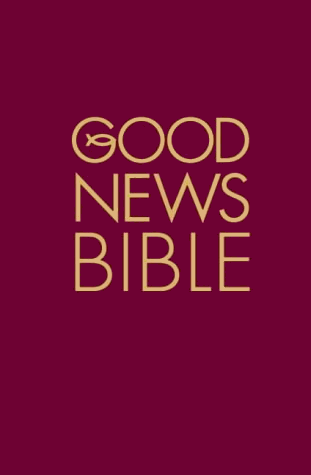
Good News Bible (GNB), also called the Good News Translation (GNT) in the United States, is an English translation of the Bible by the American Bible Society. It was first published as the New Testament under the name Good News for Modern Man in 1966. It was anglicised into British English by the British and Foreign Bible Society with the use of metric measurements for the Commonwealth market. It was formerly known as Today's English Version (TEV), but in 2001 was renamed the Good News Translation in the U.S., because the American Bible Society wished to improve the GNB's image as a translation where it had a public perception as a paraphrase. Despite the official terminology, it is still often referred to as the Good News Bible in the United States. It is a multi-denominational translation, with editions used by many Christian denominations. It is published by HarperCollins, a subsidiary of News Corp.

Samuel Petrus Kleinschmidt was a German/Danish missionary linguist born in Greenland known for having written extensively about the Greenlandic language and having invented the orthography used for writing this language from 1851 to 1973. He also translated parts of the Bible into Greenlandic.

Inuit Nunangat refers to the land, water, and ice of the homeland of Inuit in Canada. This Arctic homeland consists of four northern Canadian regions called the Inuvialuit Settlement Region, the territory Nunavut (ᓄᓇᕗᑦ), Nunavik (ᓄᓇᕕᒃ) in northern Quebec, and Nunatsiavut of Newfoundland and Labrador.
Bible translations into Cree can be subdivided by dialect of the Cree language. The main dialects are Plains Cree language, Woods Cree language, Swampy Cree language, Moose Cree language, Northern East Cree language, Southern East Cree language, Kawawachikamach, Atikamekw language and the Montagnais language.
Translations of the Bible into Irish were first printed and published in the 17th century: the New Testament, the Tiomna Nuadh, in 1602, the Old Testament, the Sean Thiomna, in 1685, and the entire Bible, the Biobla in 1690.
Part of the Bible was first available in the Kurdish language in 1856. Modern translations of the whole Bible are available in standard Kurmanji and Sorani, with many portions in other dialects.
Biblical translations into the indigenous languages of North and South America have been produced since the 16th century.

The Athabaskan language family is divided into the Northern Athabaskan, Pacific Coast Athabaskan and Southern Athabaskan groups. The full Bible has been translated into two Athabaskan languages, and the complete New Testament in five more. Another five have portions of the Bible translated into them. There are no Pacific Coast Athabaskan languages with portions of the Bible translated into them.
The Bible, or portions of it, have been translated into over 1,000 languages of Africa.
Traditionally Russia used the Old Church Slavonic language and Slavonic Bible, and in the modern era Bible translations into Russian. The minority languages of Russia usually have a much more recent history, many of them having been commissioned or updated by the Institute for Bible Translation.
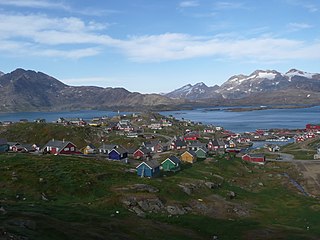
Iivit or Tunumiit are Indigenous Greenlandic Inuit from Iivi Nunaa, Tunu in the area of Kangikajik and Ammassalik, the eastern part of Inuit Nunaat. The Iivit live now mainly in Tasiilaq and Ittoqqortoormiit and are a part of the Arctic people known collectively as the Inuit. The singular for Iivit is Iik or for Tunumiit version it is Tunumiu.










